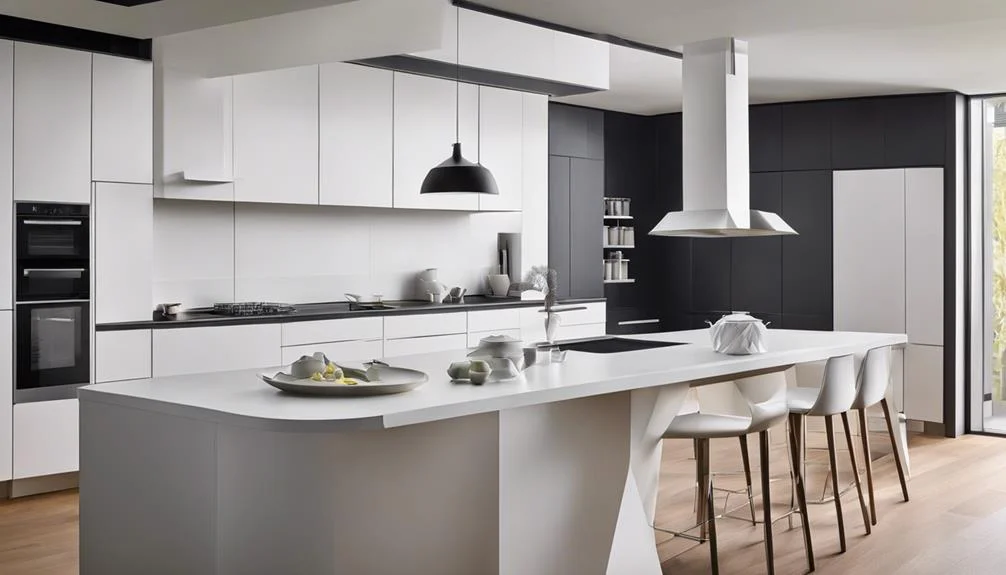The pros of a Wall Oven Microwave Combo are its space-saving design and convenience for quick meal preparation. Versatility and efficiency in cooking and heating provide dual functionality in a single appliance.
The cons of a Wall Oven Microwave Combo are the high initial cost and potentially expensive repairs in the future. Complex installation and limited flexibility in kitchen design customization pose significant downsides.
Takeaways:
- Wall oven microwave combos save space and add convenience to kitchens with limited space.
- The initial and repair costs of these combos can be high, requiring careful budget consideration.
- Cooking and size limitations might not meet the needs of all cooking styles and dish sizes.
- Repair and maintenance are complex and costly due to the integrated design and dual functionality.
| Pros of Wall Oven Microwave Combo | Cons of Wall Oven Microwave Combo |
|---|---|
| Space-saving | High initial cost |
| Convenience | Expensive repairs |
| Aesthetics | Size limitations |
| Reduced clutter | Replacement issues |
| Versatility | Not ideal for large families |
| Efficiency | Complex installation |
| Built-in look | Limited flexibility |
| Fast heating | Long heating times |
| Dual functionality | Wi-Fi connectivity issues |
| Ideal for smaller families | Limited number of oven racks |
Pros of Wall Oven Microwave Combo
- Space-saving: By combining two appliances into one, wall oven microwave combos free up valuable kitchen space, making them ideal for smaller kitchens or those seeking a minimalist design. This space efficiency means more countertop room for meal prep or other appliances.
- Convenience: These units offer the convenience of having both a microwave and an oven at eye level, simplifying the cooking process by eliminating the need to bend down frequently. This design also facilitates easier monitoring of cooking progress without having to open the door.
- Aesthetics: Wall oven microwave combos contribute to a sleek and modern kitchen aesthetic, blending seamlessly with cabinetry and other kitchen appliances. This integration enhances the overall look of your kitchen, making it appear more organized and stylish.
- Reduced clutter: By integrating the microwave and oven into one unit, these combos help reduce countertop clutter. This is especially beneficial in smaller kitchens where every inch of counter space is valuable.
- Versatility: Some wall oven microwave combos offer convection cooking capabilities in the microwave section, adding versatility and allowing for a wider range of cooking methods, from baking to roasting.
- Efficiency: These combos are efficient at reheating food, leveraging the microwave component for quick warm-ups and the oven for more thorough heating, providing flexibility based on the type of food being prepared.
- Built-in look: The integrated design of wall oven microwave combos gives kitchens a more cohesive and ‘built-in’ appearance, contributing to a more upscale and custom feel.
- Fast heating: Many models feature quick preheat times, making them ideal for fast-paced cooking scenarios and reducing waiting times for preheating, especially when time is of the essence.
- Dual functionality: Offering the functionality of both an oven and a microwave, these combos cater to a wide range of cooking needs, from baking cakes to heating leftovers, all within the same unit.
- Ideal for smaller families: The capacity and functionality of wall oven microwave combos are well-suited for smaller families or individuals, meeting their cooking needs without the excess capacity that might go unused.
Cons of Wall Oven Microwave Combo
- High initial cost: The purchase price of wall oven microwave combos can be significantly higher than standalone appliances, making them a more substantial initial investment for homeowners.
- Expensive repairs: Due to their integrated design and advanced features, repairs and maintenance can be more complex and costly, potentially leading to higher long-term ownership costs.
- Size limitations: The cooking capacity and size of these combos might not accommodate all cooking styles and dish sizes, particularly for large gatherings or oversized items.
- Replacement issues: If either the oven or microwave component fails, you might face the inconvenience and expense of replacing the entire combo unit, rather than just one appliance.
- Not ideal for large families: For households with greater cooking demands, the limited capacity of a combo unit might not be sufficient, especially when preparing meals for large family gatherings.
- Complex installation: Installing a wall oven microwave combo can be more involved and potentially more expensive than installing separate appliances, requiring professional assistance.
- Limited flexibility: Having the microwave and oven combined into one unit reduces flexibility in kitchen layout and appliance placement, which might be a drawback for those who prefer separate units for more versatile kitchen design options.
- Long heating times: Some models may experience longer preheat times for the oven component, which could slow down meal preparation, particularly when transitioning from microwave to oven cooking.
- Wi-Fi connectivity issues: Models equipped with Wi-Fi features may sometimes face connectivity issues, complicating the use of smart features designed for convenience and remote control.
- Limited number of oven racks: The oven component of some combos may come with fewer racks compared to standalone ovens, potentially limiting the ability to cook multiple dishes simultaneously.
Space-Saving Design
Embracing a space-saving design, wall oven microwave combos ingeniously merge two essential kitchen appliances into one, thereby maximizing efficiency and enhancing the aesthetic of modern kitchens. This innovative combination not only saves valuable space by eliminating the need for separate appliances but also contributes to a streamlined look that can seamlessly integrate with any kitchen design. Particularly in smaller kitchens where counter space is at a premium, the integration of a wall oven and microwave into a single unit is a significant advantage. It frees up counter space that would otherwise be occupied by a standalone microwave, offering homeowners more room for meal preparation and other activities.
Moreover, the space-saving design of wall oven microwave combos brings forth a modern and efficient cooking solution that aligns with contemporary lifestyle demands. By consolidating the oven and microwave into one cohesive unit, these combos facilitate a more organized kitchen layout. This integration not only simplifies the cooking process but also contributes to a more orderly and aesthetically pleasing kitchen environment. In essence, wall oven microwave combos represent a smart choice for those looking to optimize their kitchen’s functionality while maintaining a sleek and unified design.
Convenience Benefits
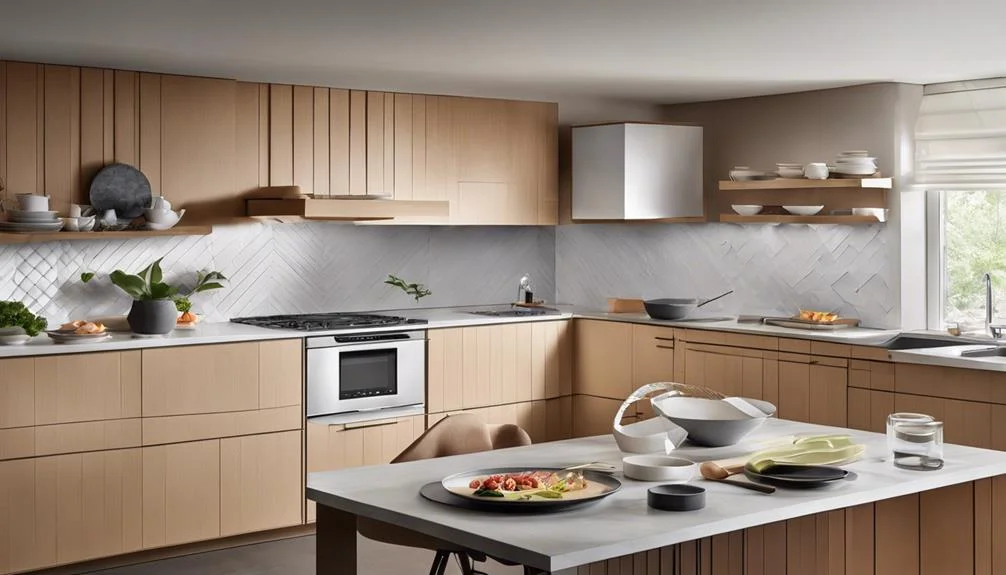
Wall oven microwave combos streamline the cooking process by offering a dual-functionality that caters to both traditional baking and microwave reheating within a single appliance, significantly enhancing kitchen convenience. These innovative units provide a high level of flexibility in meal preparation, enabling the simultaneous cooking and reheating of food. This feature is particularly valuable for busy households, where time savings during meal prep are crucial.
The integration of a microwave and oven into one appliance also eliminates the need for multiple separate units, thus freeing up valuable counter space. This consolidation is a boon for smaller kitchens where every inch of counter space is precious. Furthermore, the cooking versatility offered by these combos—which includes baking, broiling, roasting, grilling, and microwaving—accommodates a wide range of cooking needs and preferences, ensuring that various dishes can be prepared with ease.
Additionally, the seamless integration of wall oven microwave combos into kitchen cabinetry contributes to a streamlined and cohesive kitchen design. This not only enhances the overall aesthetic appeal of the kitchen but also complements existing decor, making these combos an attractive choice for homeowners looking to maintain a certain level of design continuity in their kitchens.
Cost Considerations
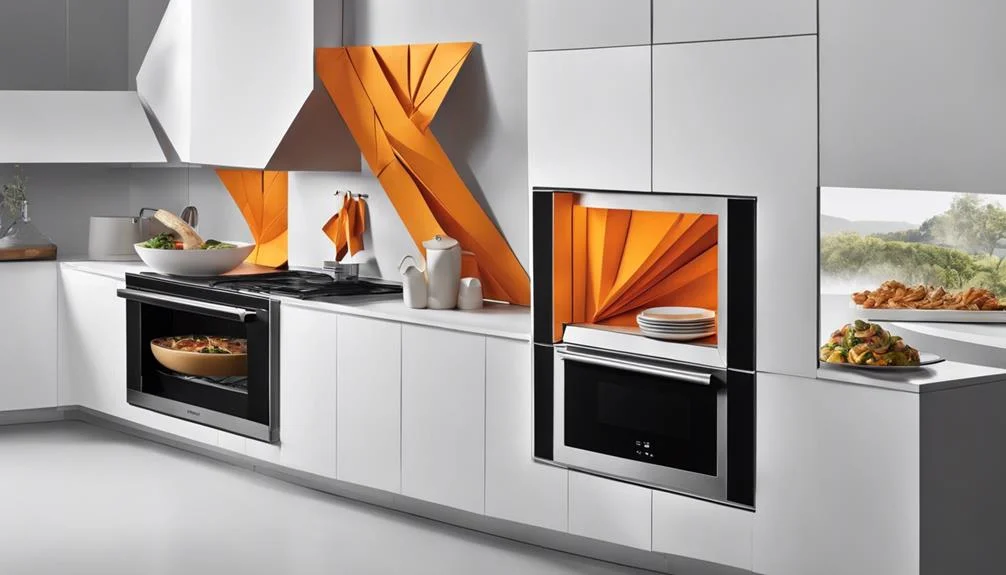
While offering numerous functional and aesthetic advantages, the acquisition of a wall oven microwave combo also necessitates a consideration of its higher initial investment and potential long-term financial implications. It’s crucial for potential buyers to assess both the upfront and ongoing costs associated with such an appliance. The allure of combining two essential kitchen appliances into one sleek unit is tempered by the reality of its price tag and maintenance costs.
To add depth to the discussion, consider the following cost considerations:
- Initial Purchase Price: Wall oven microwave combos typically range between $2,000 to $5,000, significantly higher than purchasing standalone appliances.
- Installation Costs: The need for professional installation can further increase the initial financial outlay, making it necessary to budget for more than just the purchase price.
- Repair and Maintenance: Given the complexity of these combined units, repairs can be more intricate and costlier, potentially impacting the long-term affordability.
- Value Over Time: Despite the higher upfront costs, the space-saving and aesthetic benefits of a wall oven microwave combo may offer considerable value and convenience, offsetting initial expenses over time.
Understanding these cost implications is essential for making an informed decision that aligns with one’s budget and kitchen needs.
Size Limitations
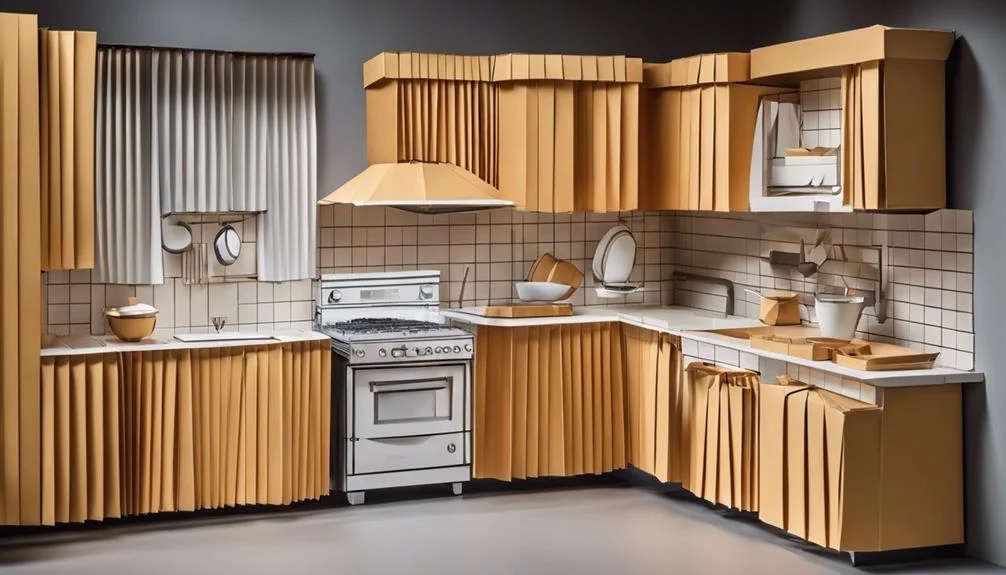
When considering a wall oven microwave combo, understanding the size limitations is fundamental to making an informed decision. These units are typically available in either 27 or 30-inch sizes, which can be a compact solution for saving space in the kitchen while also posing a challenge for those requiring more cooking area.
The adaptability of these sizes to various kitchen layouts ensures a seamless integration, though it necessitates careful measurement and planning.
Compact Kitchen Solution
For homeowners facing the challenge of limited kitchen space, wall oven microwave combos emerge as an ideal solution, skillfully combining functionality and style within a compact footprint. These innovative appliances offer several compelling benefits:
- Space Efficiency: Designed to integrate into kitchen cabinetry, they save precious countertop and floor space.
- Sleek Aesthetics: Their built-in design contributes to a streamlined and modern kitchen look.
- Versatile Cooking Options: Despite their compact size, they provide a wide range of cooking features for versatile meal preparation.
- Convenience: The combo of an oven and microwave in one unit maximizes functionality, making it easier to cook a variety of dishes without the need for multiple appliances.
Limited Cooking Space
Despite the numerous benefits of wall oven microwave combos for compact kitchens, one significant drawback is their limited cooking space, which may not suit all culinary needs. These units may restrict the size of dishes that can be prepared, with the microwave component often having a smaller capacity. This limitation affects the ability to heat or cook large amounts of food simultaneously.
Baking or roasting bigger items, such as turkeys or large casseroles, becomes a challenge due to the size constraints of the combo units. This limited cooking space can impact meal preparation for larger gatherings or special occasions, where multiple dishes need to be cooked at the same time. It’s crucial to consider these size limitations to ensure the wall oven microwave combo meets your cooking needs and accommodates the size of dishes you typically prepare.
Adaptability to Kitchens
Understanding the adaptability of wall oven microwave combos to various kitchen sizes is essential, given their standard dimensions of 27 or 30 inches. These appliances are designed to maximize kitchen functionality while minimizing space usage. However, ensuring a perfect fit requires careful consideration of several factors:
- Kitchen Space: Must accommodate the combo’s dimensions, either 27 or 30 inches.
- Space-Saving Design: Ideal for smaller kitchens, enhancing usability without compromising on functionality.
- Installation Limitations: Larger units might not fit in more compact kitchen layouts.
- Measurement Accuracy: Essential for seamless integration into the kitchen’s layout, considering available wall space and cabinetry requirements.
Maintenance Challenges
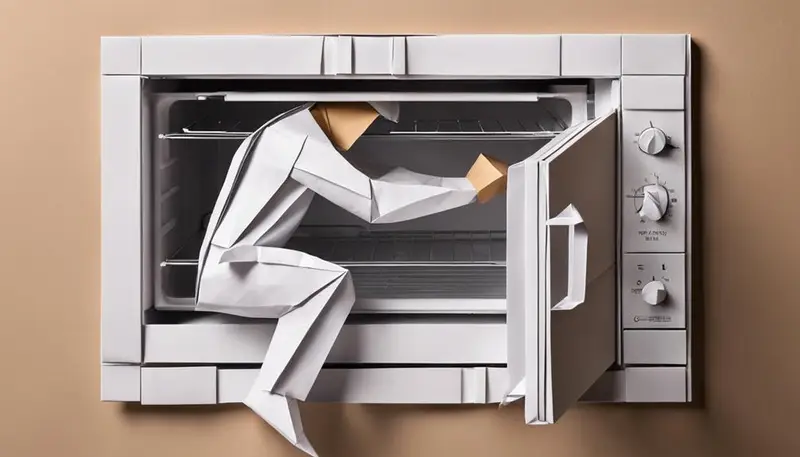
Maintaining a wall oven microwave combo often presents unique challenges, primarily due to the dual functionality requiring separate upkeep for both the oven and microwave components. The integration of two distinct appliances into a single unit complicates cleaning tasks, necessitating a meticulous approach to address the distinct needs of each section. For instance, the microwave may require gentle cleaning agents to avoid damage to the interior, while the oven might need more robust cleaning techniques to remove baked-on residue.
Proper maintenance is not only about cleanliness but also about ensuring the longevity and optimal performance of both functions. If neglected, the performance of either the oven or microwave could start to decline, affecting the overall efficiency of the combo unit. Therefore, balancing the maintenance needs of both components is critical. Users must establish a regular cleaning and care routine, tailored to the specific requirements of their appliance, to prevent potential issues.
Moreover, adhering to a consistent maintenance schedule can help identify minor issues before they escalate into major problems, saving time and money in the long run. Ultimately, understanding and committing to the necessary upkeep can significantly enhance the user experience and ensure the device serves its purpose effectively for years to come.
Interdependence Issues
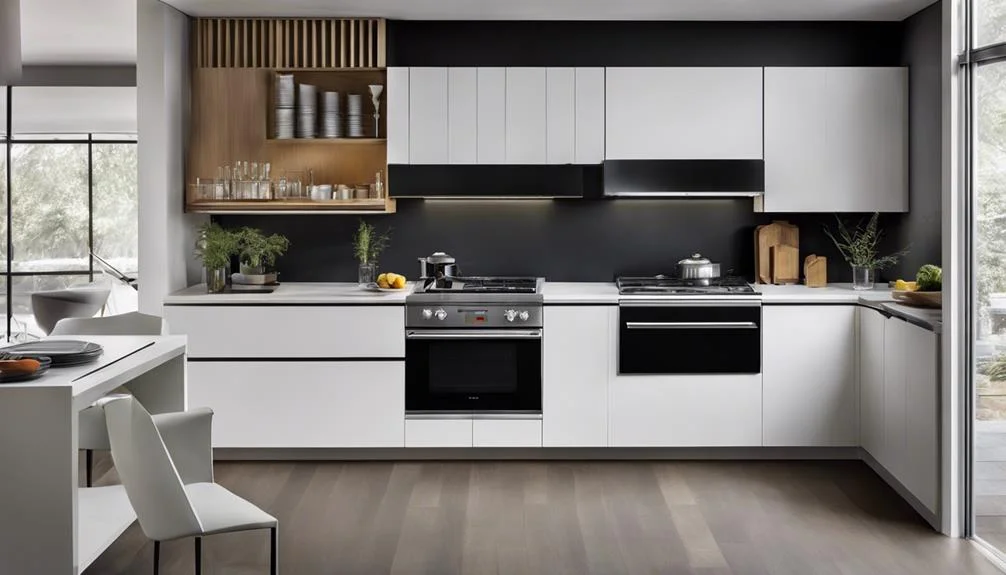
When considering the integration of a wall oven microwave combo, it is crucial to understand the inherent interdependence issues that come with such appliances.
The complexity of repairs significantly increases since a malfunction in one component could necessitate the replacement or repair of the entire unit, leading to potential inconvenience and higher costs.
Additionally, the dual functionality of these combos might limit performance capabilities compared to their standalone counterparts, affecting overall cooking efficiency.
Repair Complexity Increases
The repair of wall oven microwave combos becomes notably more complex and expensive due to the interdependence of components within the unit. This intrinsic connection between the microwave and oven not only complicates diagnostic procedures but also increases the overall repair costs. Unlike standalone appliances, where a single malfunctioning part can be replaced or repaired independently, wall oven microwave combos often necessitate comprehensive servicing or even complete unit replacement.
If one component fails, it may necessitate the replacement of the entire unit.
Repairing these combos is generally more complicated and costly.
The combo’s interdependence limits customization and individual repairs.
Understanding the complexity is essential for effective maintenance planning and budgeting, ensuring users are prepared for potential challenges and costs.
Dual Functionality Limitations
Facing the challenge of dual functionality, wall oven microwave combos often present limitations due to their interdependent components. When one part fails, it may necessitate the replacement of the entire unit, posing inconvenient costs.
The integrated design restricts customization options, a drawback for those desiring personalization. Furthermore, the higher initial expense can be a significant deterrent, particularly if the consumer requires only one of the functions.
Performance-wise, these combos might not match the efficiency of standalone units due to the compromise in component quality. Repairing these units also presents a unique challenge; the interconnectedness of the microwave and oven amplifies both the complexity and cost of maintenance, making it a less favorable option for some.
Repair Considerations
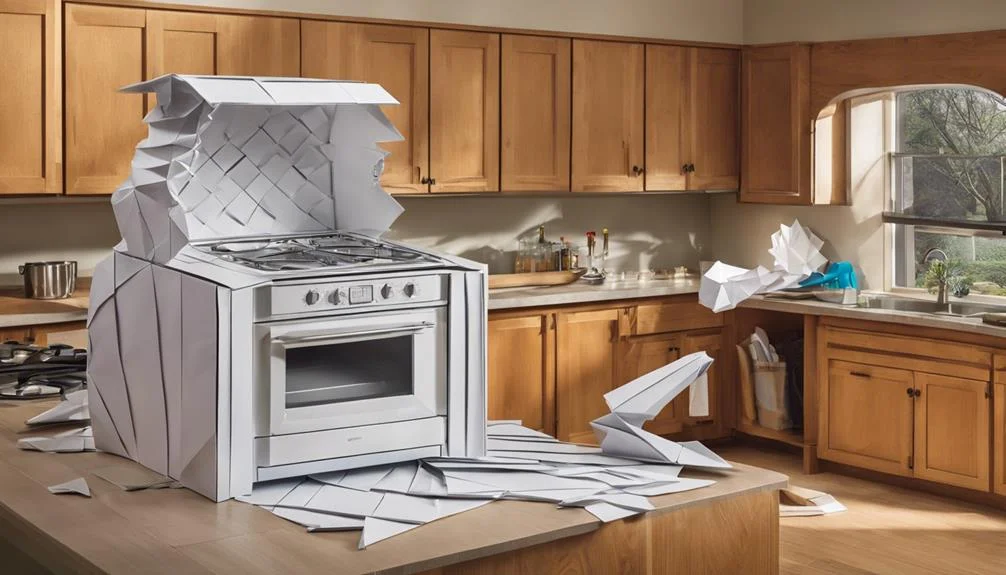
Considering the integrated nature of wall oven microwave combos, repairs can often be more complex and costly than those for standalone units. The seamless integration, while aesthetically pleasing and functional, means that troubleshooting and fixing problems may necessitate a more involved process. This complexity is primarily because the appliance combines two distinct functionalities into a single unit, requiring specialized knowledge and tools for effective repair.
To add depth to this discussion, consider the following points:
- Complexity of Repairs: The integrated design means that if one component, such as the microwave, fails, it may affect the overall functionality, making repairs more intricate.
- Cost Factors: Due to the specialized nature of these combos, repair costs can be significantly higher compared to standalone appliances.
- Replacement Considerations: In some cases, if a critical component fails, it could necessitate the replacement of the entire unit, further elevating the cost.
- Limited Customization: The bespoke nature of these units means there are fewer options for customization or replacement parts, potentially complicating repair efforts.
Regular maintenance and cleaning are essential to mitigate these issues, helping prevent costly repairs and extend the unit’s lifespan.
Conclusion
In conclusion, the decision to integrate a wall oven microwave combo into a kitchen environment warrants a comprehensive evaluation of its benefits and drawbacks.
While these appliances offer a space-saving design and add convenience to cooking routines, they also come with significant cost considerations, potential size limitations, and maintenance challenges.
The interdependence of the oven and microwave units poses a risk in terms of repair considerations, possibly necessitating the replacement of the entire system should one component fail.
Prospective buyers must weigh these factors carefully against their individual needs and kitchen specifications.
